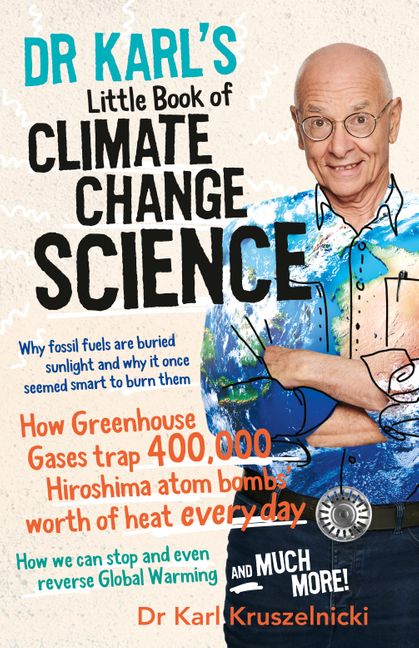Report on Extreme Heat, Climate Change Communication, and Sustainable Development Goals
Introduction: Extreme Weather as a Catalyst for Climate Action
Research indicates that extreme weather events, such as heat waves, serve as critical opportunities for public education and policy engagement. These events focus attention on the tangible impacts of climate change, fostering a greater understanding of climate risks. Effective communication during these periods can enhance public demand for climate action, directly supporting the objectives of several Sustainable Development Goals (SDGs).
- SDG 13 (Climate Action): Leveraging these “teachable moments” is crucial for building public and political will to combat climate change and its impacts.
- SDG 3 (Good Health and Well-being): Highlighting the health risks associated with extreme heat underscores the urgency of climate mitigation and adaptation.
- SDG 11 (Sustainable Cities and Communities): Focusing on local impacts encourages the development of resilient infrastructure and communities.
Public Perception and Health Impacts in Relation to SDG 3 and SDG 13
Public awareness and concern regarding the health implications of climate-change-induced extreme heat are increasing, aligning with the core tenets of SDG 3 (Good Health and Well-being) and SDG 13 (Climate Action).
- Rising Concern Over Local Harm: As of May 2025, 48% of Americans express at least moderate worry that their local area will be harmed by extreme heat.
- Increased Worry About Health Risks: The percentage of Americans anticipating an increase in community heat stroke incidents due to global warming has tripled over the last decade, reaching 45% in December 2024. This directly reflects growing concerns for public health under SDG 3.
- Acknowledging Climate Change’s Role: A significant majority (65%) of Americans believe global warming is affecting extreme heat in the U.S. However, a communication gap persists, as 24% do not see the connection or are unsure, despite high scientific confidence. Bridging this gap is essential for advancing SDG 13.
Communication Strategies and Regional Vulnerabilities
Effective communication strategies are vital for addressing regional disparities in risk perception and vulnerability, which is central to achieving SDG 11 (Sustainable Cities and Communities) and SDG 17 (Partnerships for the Goals).
Key Findings for Strategic Communication
- Attribution Science: The scientific link between climate change and extreme heat is more easily measured and communicated than for other weather events, presenting a clear opportunity for educational outreach. A partnership with the George Mason University Center for Climate Change Communication found that information on extreme heat is more intuitive for the public to understand than other climate-related health harms.
- Message Efficacy: Explicitly linking a heat wave to climate change has been shown to increase public understanding of the connection, a key step toward fostering support for climate action (SDG 13).
- Regional Outreach Needs: Educational outreach is particularly needed in Midwestern and Southwestern counties, where high exposure to extreme heat does not always correlate with high levels of concern about global warming. This targeted approach is necessary for building inclusive and resilient communities under SDG 11.
- Perception vs. Risk: Populations in historically cooler regions often perceive less risk from heat waves but may be more vulnerable due to limited access to indoor cooling. This highlights the need for infrastructure and policy planning that addresses the goals of SDG 11.
- Global Perspective: A 2023 survey, primarily in the Global South, found that respondents almost universally identified long periods of unusually hot weather as the most frequently experienced recent hazard, emphasizing the global scale of the climate crisis and the universal relevance of SDG 13.
Conclusion: The Role of Partnerships in Driving Impact
Strategic partnerships, such as those offered by the YPCCC Partnerships Program, are essential for translating research insights into impactful communication. By collaborating with various stakeholders, these programs help apply data-driven strategies to enhance public engagement and accelerate progress toward the Sustainable Development Goals, particularly SDG 17 (Partnerships for the Goals), which underpins all efforts to create a sustainable future.
SDGs Addressed in the Article
SDG 13: Climate Action
- The article’s central theme is the impact of climate change, specifically the intensification of extreme heat waves. It directly discusses the need to communicate these links to increase public understanding and demand for “climate action.” This aligns with the core objective of SDG 13, which is to take urgent action to combat climate change and its impacts.
SDG 3: Good Health and Well-being
- The article explicitly mentions the health consequences of extreme heat. It notes a tripling in the percentage of Americans who believe “heat stroke caused by extreme heat waves will become more common” due to global warming. This concern for climate-related health risks connects directly to SDG 3’s goal of ensuring healthy lives and promoting well-being.
SDG 11: Sustainable Cities and Communities
- The article discusses how local areas are harmed by extreme heat and highlights regional vulnerabilities. It points out that people in cooler regions, who may have limited access to indoor cooling, are at greater risk. This focus on the resilience of human settlements to climate-related disasters is a key component of SDG 11.
Specific SDG Targets Identified
-
Target 13.3: Improve education, awareness-raising and human and institutional capacity on climate change mitigation, adaptation, impact reduction and early warning.
- The article is fundamentally about the work of the Yale Program on Climate Change Communication (YPCCC). It emphasizes that extreme weather events are “teachable moments” and that communication can “increase public understanding of climate risks.” It also calls for “educational outreach” in specific regions, directly reflecting the aims of this target.
-
Target 13.1: Strengthen resilience and adaptive capacity to climate-related hazards and natural disasters in all countries.
- By focusing on the increasing frequency and severity of heat waves as a climate-related hazard, the article implicitly addresses the need for societies to strengthen their resilience. The discussion of vulnerability in different regions (e.g., those with limited access to cooling) underscores the importance of building adaptive capacity.
-
Target 3.d: Strengthen the capacity of all countries… for early warning, risk reduction and management of national and global health risks.
- The article highlights the growing public concern over health risks like heat stroke. The communication efforts described are a form of early warning, aiming to inform the public about escalating health dangers associated with climate change, which is essential for risk reduction and management.
-
Target 11.5: By 2030, significantly reduce the number of deaths and the number of people affected… caused by disasters… with a focus on protecting the poor and people in vulnerable situations.
- Heat waves are natural disasters intensified by climate change. The article’s focus on how communities are harmed and the specific vulnerabilities of certain populations (e.g., those in cooler climates without adequate cooling infrastructure) aligns with the goal of protecting people from the impacts of such disasters.
Indicators for Measuring Progress
-
Public Awareness and Concern about Climate Impacts
- The article provides direct quantitative data that can serve as indicators of public awareness. For example, it states that “48% of Americans are at least ‘moderately worried’ that their local area might be harmed by extreme heat” and “65% of Americans think global warming is affecting extreme heat in the U.S. at least ‘some’.” These percentages measure progress toward awareness goals.
-
Perception of Specific Health Risks
- An indicator of public understanding of climate-related health risks is provided: “the percentage of Americans who think that heat stroke caused by extreme heat waves will become more common in their community over the next 10 years… has tripled (to 45%).” Tracking this percentage over time measures the effectiveness of communication on health impacts.
-
Self-Reported Exposure to Climate Hazards
- The article mentions a survey in the Global South where “respondents nearly everywhere were more likely to say that they had recently experienced long periods of unusually hot weather than any other hazard.” This self-reported data serves as a proxy indicator for the increasing prevalence of climate-related hazards affecting populations.
Summary of SDGs, Targets, and Indicators
| SDGs | Targets | Indicators (Mentioned or Implied in the Article) |
|---|---|---|
| SDG 13: Climate Action |
13.3: Improve education, awareness-raising and human and institutional capacity on climate change.
13.1: Strengthen resilience and adaptive capacity to climate-related hazards. |
– Percentage of the population that is worried about harm from extreme heat (48%). – Percentage of the population that believes global warming affects extreme heat (65%). – Self-reported experience of long periods of unusually hot weather. |
| SDG 3: Good Health and Well-being | 3.d: Strengthen capacity for early warning, risk reduction and management of health risks. | – Percentage of the population who think heat stroke will become more common due to global warming (45%). |
| SDG 11: Sustainable Cities and Communities | 11.5: Significantly reduce the number of people affected by disasters, with a focus on protecting the vulnerable. | – Data on public risk perception in different regions versus actual vulnerability (e.g., perception of risk in cooler regions vs. limited access to indoor cooling). |
Source: climatecommunication.yale.edu






